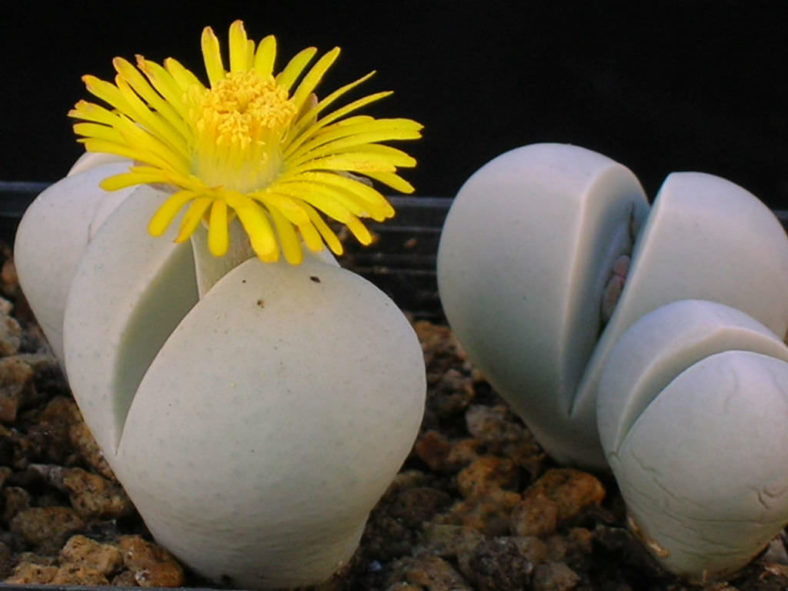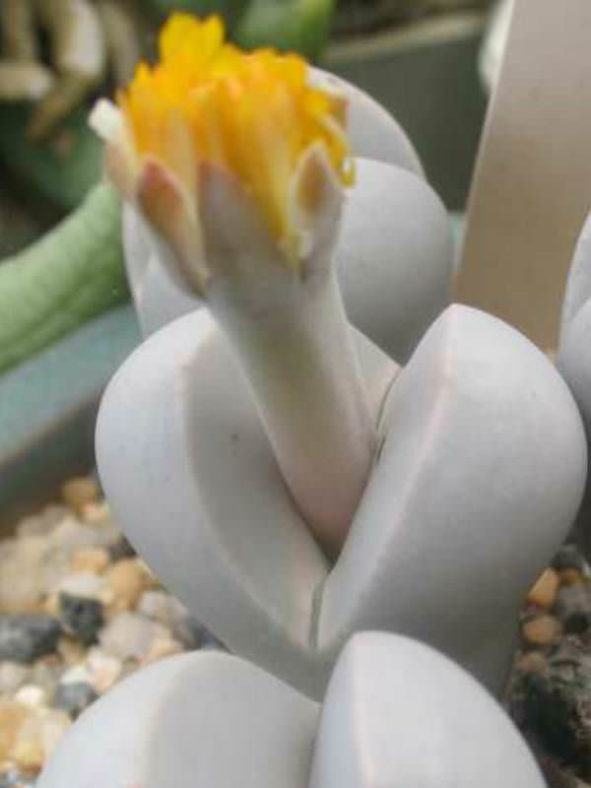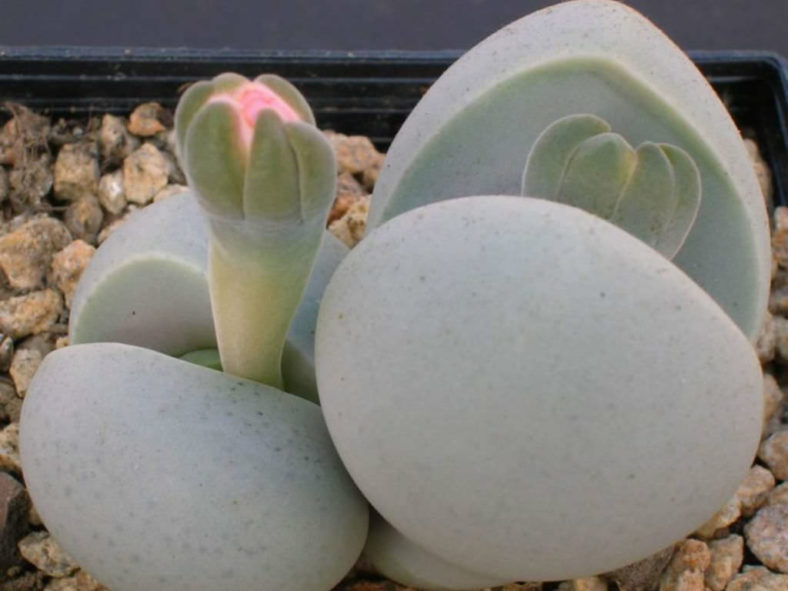Scientific Name
Dinteranthus microspermus (Dinter & Derenb.) Schwantes
Common Name(s)
Stone Plant, Living Stone
Synonym(s)
Mesembryanthemum microspermum, Rimaria microsperma
Scientific Classification
Family: Aizoaceae
Subfamily: Ruschioideae
Tribe: Ruschieae
Genus: Dinteranthus
Etymology
The specific epithet "microspermus" (pronounced "my-kro-SPERM-us") means "small-seeded" and refers to the very tiny seeds, almost dust-like seeds of this species.
Origin
Dinteranthus microspermus is native to Namibia and South Africa.
Description
Dinteranthus microspermus is a small, stemless succulent with a pair of boat-shaped, reddish-grey-green to grey-violet leaves. It typically grows either solitary or sometimes few-branched and can reach a height of 1 inch (2.5 cm).
The solitary flower is many-petaled, yellow or whitish, often tipped with red, and appears in summer. The fruit is a 6- to 10-locular capsule with broad valve wings.
Subspecies

Hardiness
USDA hardiness zone 10a to 11b: from 30°F (-1.1°C) to 50°F (10°C).
How to Grow and Care
Adult plants of this genus behave like Lithops. Summer expansion leads to flowering in fall, followed by a slow transfer of resources in winter; the main difference is that the presence of two active leaf pairs is not unusual in some Dinteranthus.
Dinteranthus requires slightly less water than most Lithops. Excellent drainage is essential. Their nutritive requirements are amazingly modest, and the root systems of even the healthiest plants are minuscule. What they need most critically is good light, which will give them a bone-white aspect. Older long-stemmed plants can and usually should be turned into cuttings and re-rooted.
The real trouble with Dinteranthus is that the seedlings are so tiny that they are apt to damp off. But if the following rules are observed, success is likely. Sow in high summer; use sterilized soil with extra grit and enough peat to ensure high acidity; do not cover the seeds.
See more at How to Grow and Care for Dinteranthus.
Links
- Back to genus Dinteranthus
- Succupedia: Browse succulents by Scientific Name, Common Name, Genus, Family, USDA Hardiness Zone, Origin, or cacti by Genus
Photo Gallery
Click on a photo to see a larger version.


